26 Gentle Sciatica Exercises for Beginners to Start Today
Sciatica pain can be relentless, making even simple daily activities feel like a challenge. Whether it’s a dull ache or a sharp, shooting pain that radiates from your lower back down your leg, finding relief is crucial. Sciatica is commonly caused by compression or irritation of the sciatic nerve, often due to a herniated disc, bone spur, or spinal stenosis. While the discomfort can be frustrating, the good news is that targeted movement can help ease pain, improve flexibility, and strengthen the muscles that support your spine. To give you even more ways to find relief, we've expanded our list to 26 gentle sciatica exercises for beginners. These stretches and movements are designed to relieve pressure on the sciatic nerve, increase mobility, and reduce inflammation—without causing additional strain. Whether you're experiencing occasional flare-ups or chronic discomfort, these exercises will help you move toward relief, one gentle stretch at a time.
1. Gentle Stretching: The Foundation of Relief

Stretching is a fundamental component of any exercise routine for sciatica relief. Gentle stretching helps to improve flexibility, reduce muscle tension, and increase the range of motion in the lower back, hips, and legs. This can alleviate pressure on the sciatic nerve and promote better alignment of the spine. When stretching, it is important to focus on slow, controlled movements and to hold each stretch for at least 15-30 seconds to allow the muscles to relax and lengthen. Breathing deeply and consistently throughout the stretch can also enhance relaxation and improve the effectiveness of the stretch. Incorporating a variety of stretches that target different muscle groups, such as the hamstrings, piriformis, and hip flexors, can provide comprehensive relief and support overall spinal health. The following sections will introduce specific stretches that can be easily incorporated into your daily routine.
2. Standing Hamstring Stretch: Easing Tension

The standing hamstring stretch is an effective exercise for relieving tension in the lower back and legs, which can contribute to sciatica pain. To perform this stretch, stand with your feet hip-width apart and gently bend forward at the hips, reaching towards your toes. It is important to keep your knees slightly bent to avoid straining the lower back. As you reach down, focus on feeling a gentle stretch in the back of your legs. If you cannot reach your toes, rest your hands on your shins or a sturdy surface for support. Hold the stretch for 15-30 seconds, breathing deeply and allowing the muscles to relax. This stretch can help improve flexibility in the hamstrings and reduce pressure on the sciatic nerve, providing relief from discomfort and promoting better posture.
3. Piriformis Stretch: Targeting the Source
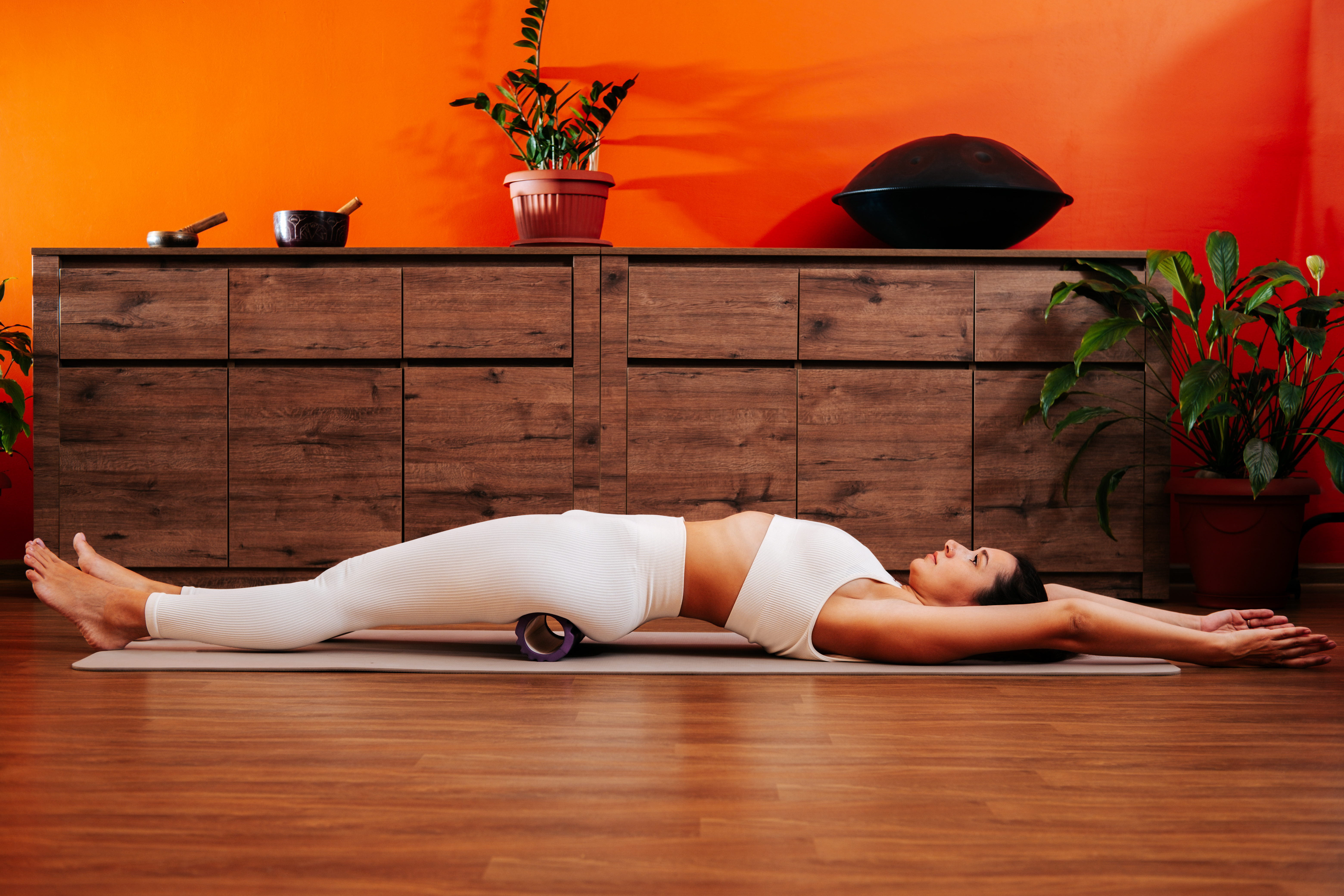
The piriformis muscle, located deep in the buttock region, can sometimes irritate the sciatic nerve, leading to pain and discomfort. The piriformis stretch is designed to alleviate tension in this muscle and reduce pressure on the nerve. To perform this stretch, lie on your back with your knees bent and feet flat on the floor. Cross one ankle over the opposite knee, forming a figure-four shape. Gently pull the uncrossed leg towards your chest, feeling a stretch in the buttock of the crossed leg. Hold the stretch for 15-30 seconds, then switch sides. This stretch can be modified by performing it in a seated position or against a wall for added support. Regularly incorporating the piriformis stretch into your routine can help alleviate sciatic pain and improve hip flexibility.
4. Seated Forward Bend: Enhancing Flexibility
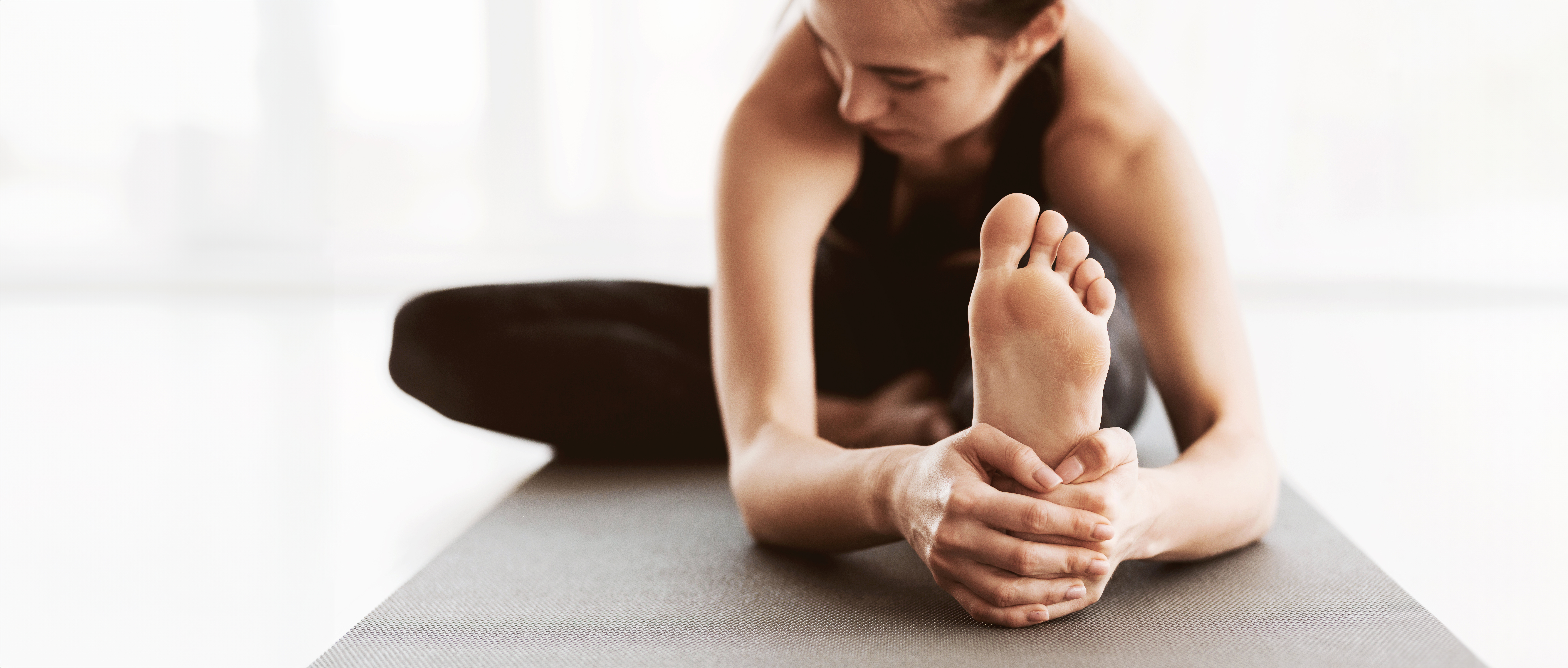
The seated forward bend is a gentle exercise that targets the lower back, hamstrings, and hips, promoting flexibility and relieving tension. To perform this stretch, sit on the floor with your legs extended straight in front of you. Keeping your back straight, slowly bend forward from the hips, reaching towards your toes. If you cannot reach your toes, rest your hands on your shins or ankles. Focus on maintaining a gentle stretch in the back of your legs and lower back, avoiding any strain or discomfort. Hold the position for 15-30 seconds, breathing deeply and allowing the muscles to relax. This stretch can be modified by using a strap or towel around the feet to assist in reaching forward. Incorporating the seated forward bend into your routine can help improve flexibility and reduce sciatica pain.
5. Knee to Chest Stretch: Relieving Lower Back Pain
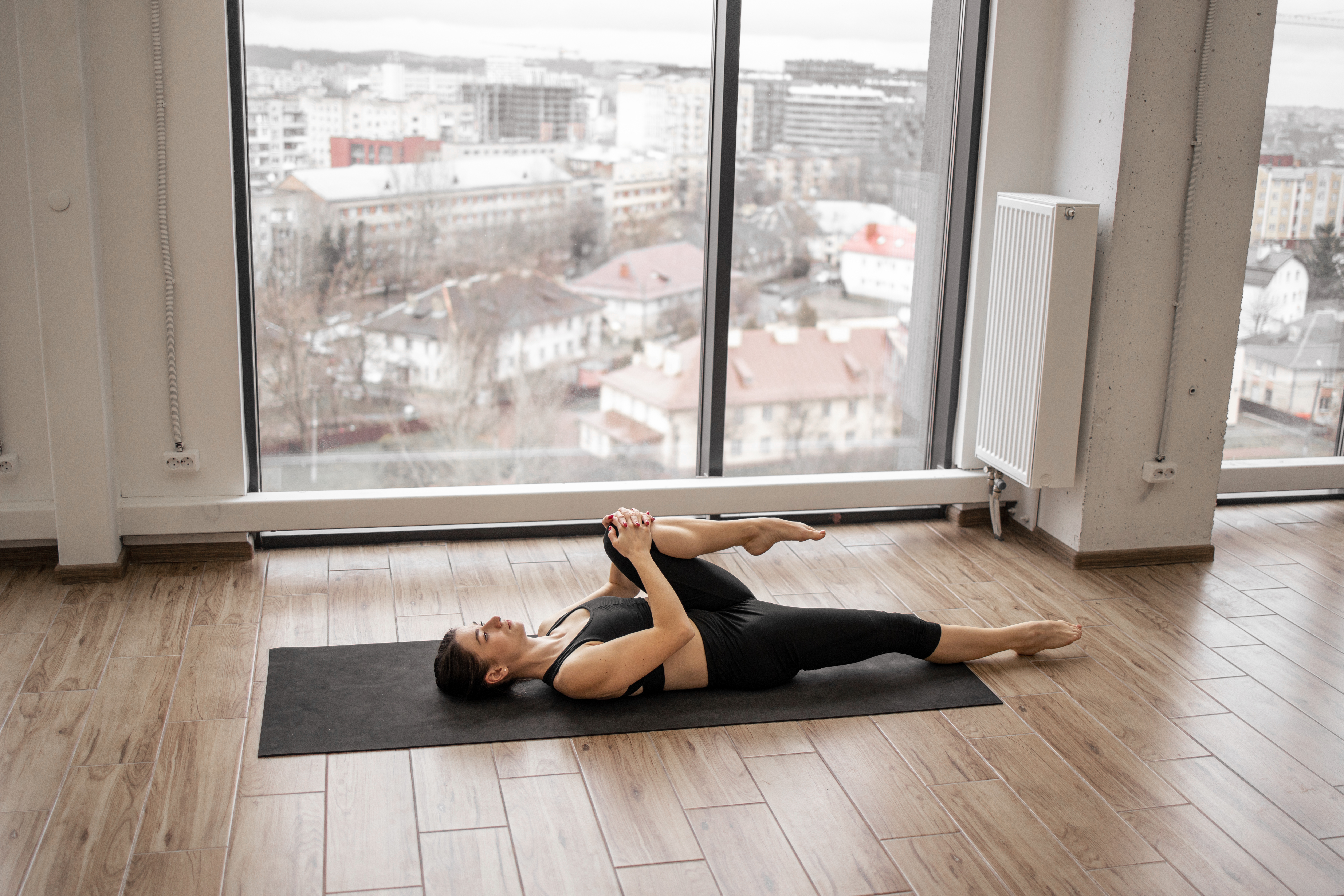
The knee to chest stretch is a simple yet effective exercise for relieving tension in the lower back and hips, which can contribute to sciatica pain. To perform this stretch, lie on your back with your knees bent and feet flat on the floor. Gently pull one knee towards your chest, keeping the opposite foot on the floor. Hold the stretch for 15-30 seconds, feeling a gentle stretch in the lower back and hip. Repeat on the opposite side. For a deeper stretch, try pulling both knees towards your chest simultaneously. This stretch can help alleviate pressure on the sciatic nerve and promote relaxation in the lower back, providing relief from discomfort and improving mobility.
6. Cat-Cow Stretch: Promoting Spinal Flexibility
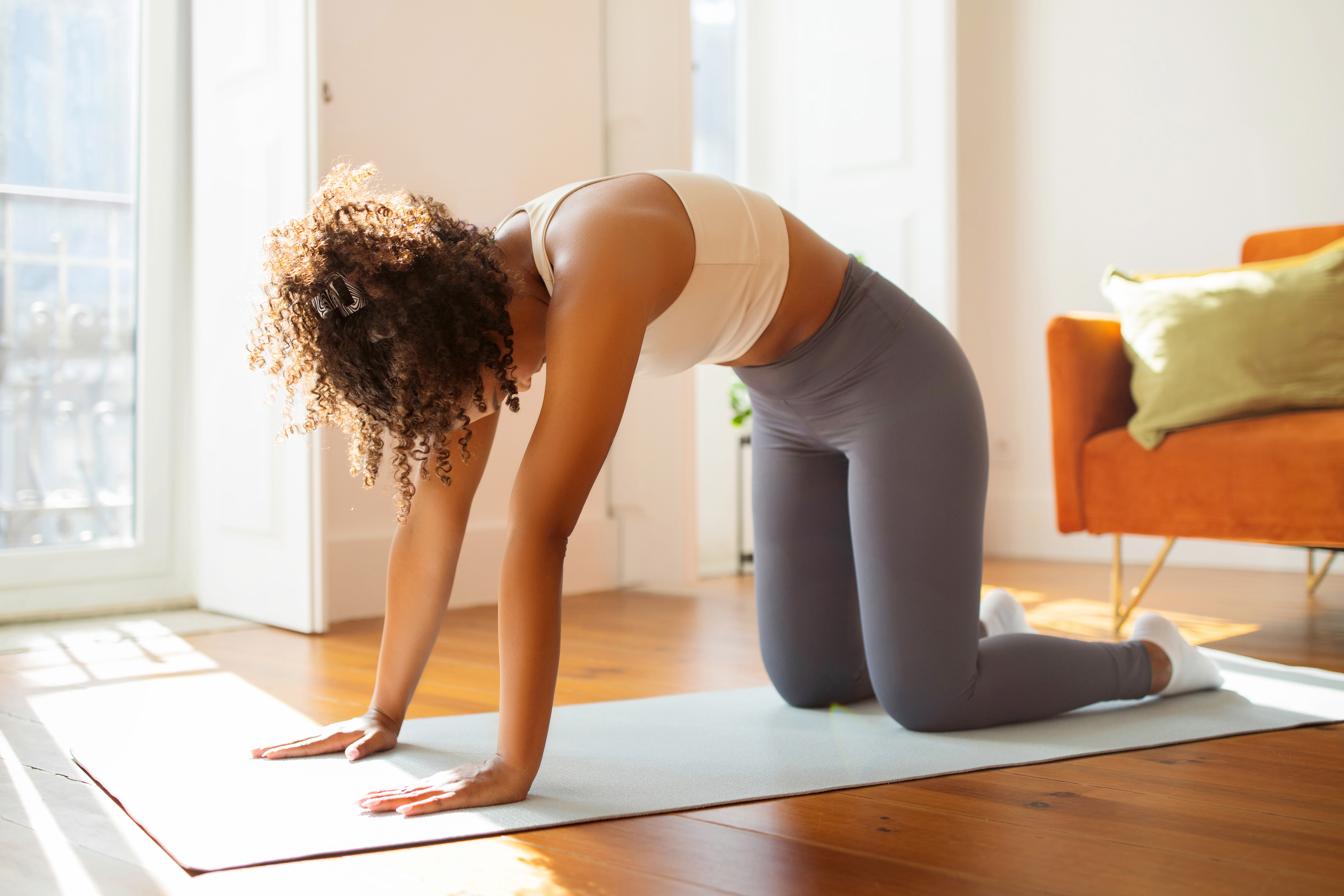
The cat-cow stretch is a dynamic exercise that promotes flexibility and mobility in the spine, helping to alleviate tension and reduce sciatica pain. To perform this stretch, begin on your hands and knees in a tabletop position. Inhale as you arch your back, lifting your head and tailbone towards the ceiling (cow pose). Exhale as you round your back, tucking your chin to your chest and drawing your belly button towards your spine (cat pose). Continue to alternate between these two positions, moving slowly and smoothly with your breath. This gentle movement helps to warm up the spine, improve flexibility, and relieve tension in the back and hips. Incorporating the cat-cow stretch into your routine can enhance spinal mobility and support overall back health.
7. Pelvic Tilt: Strengthening Core Muscles
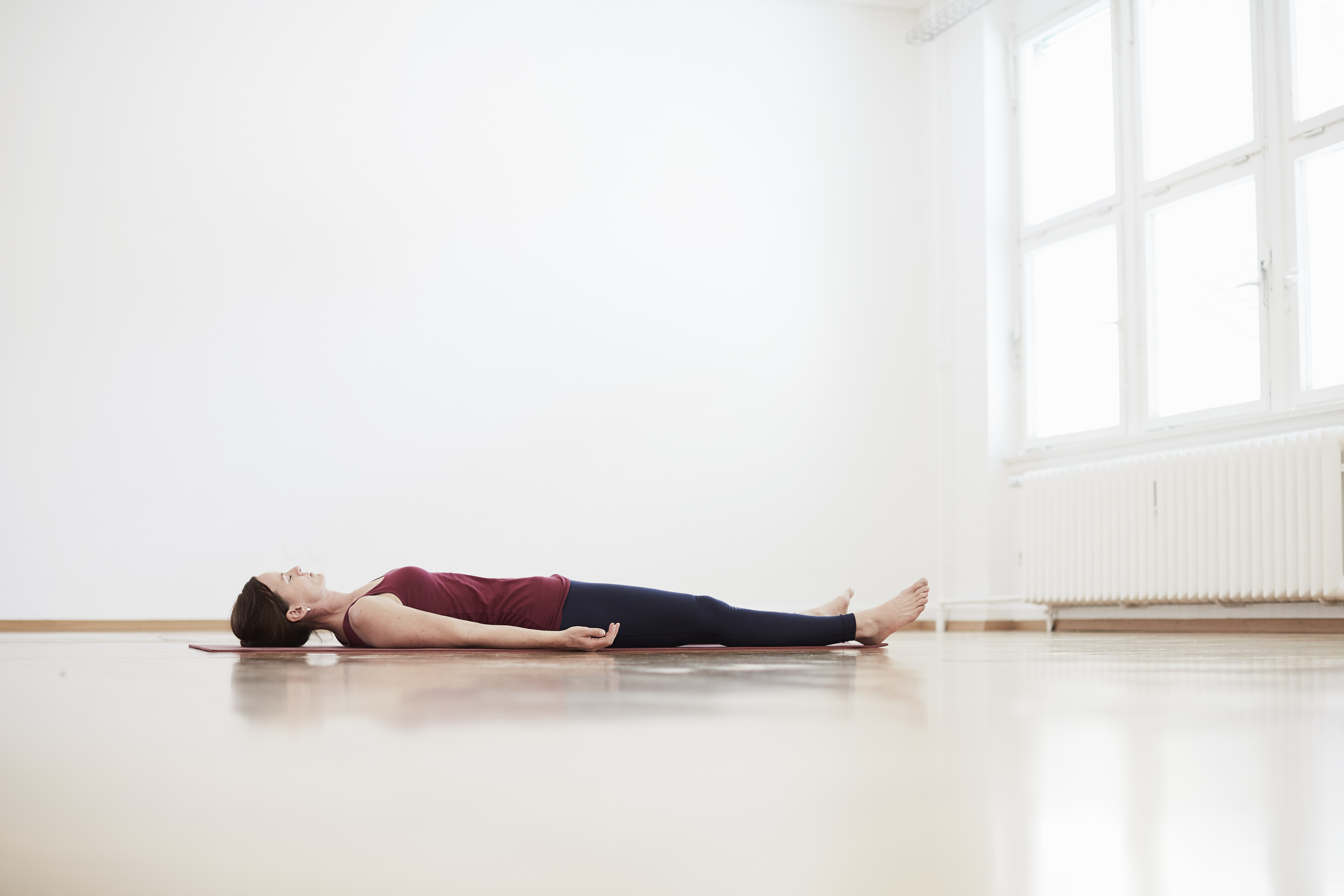
The pelvic tilt is an exercise that strengthens the core muscles and improves stability in the lower back, helping to alleviate sciatica pain. To perform this exercise, lie on your back with your knees bent and feet flat on the floor. Gently flatten your lower back against the floor by tilting your pelvis upwards, engaging your abdominal muscles. Hold the position for a few seconds, then release. Repeat the movement 10-15 times, focusing on maintaining a smooth and controlled motion. The pelvic tilt helps to strengthen the muscles that support the spine, improve posture, and reduce pressure on the sciatic nerve. Regularly incorporating this exercise into your routine can enhance core stability and support overall spinal health.
8. Child’s Pose: Stretching and Relaxation
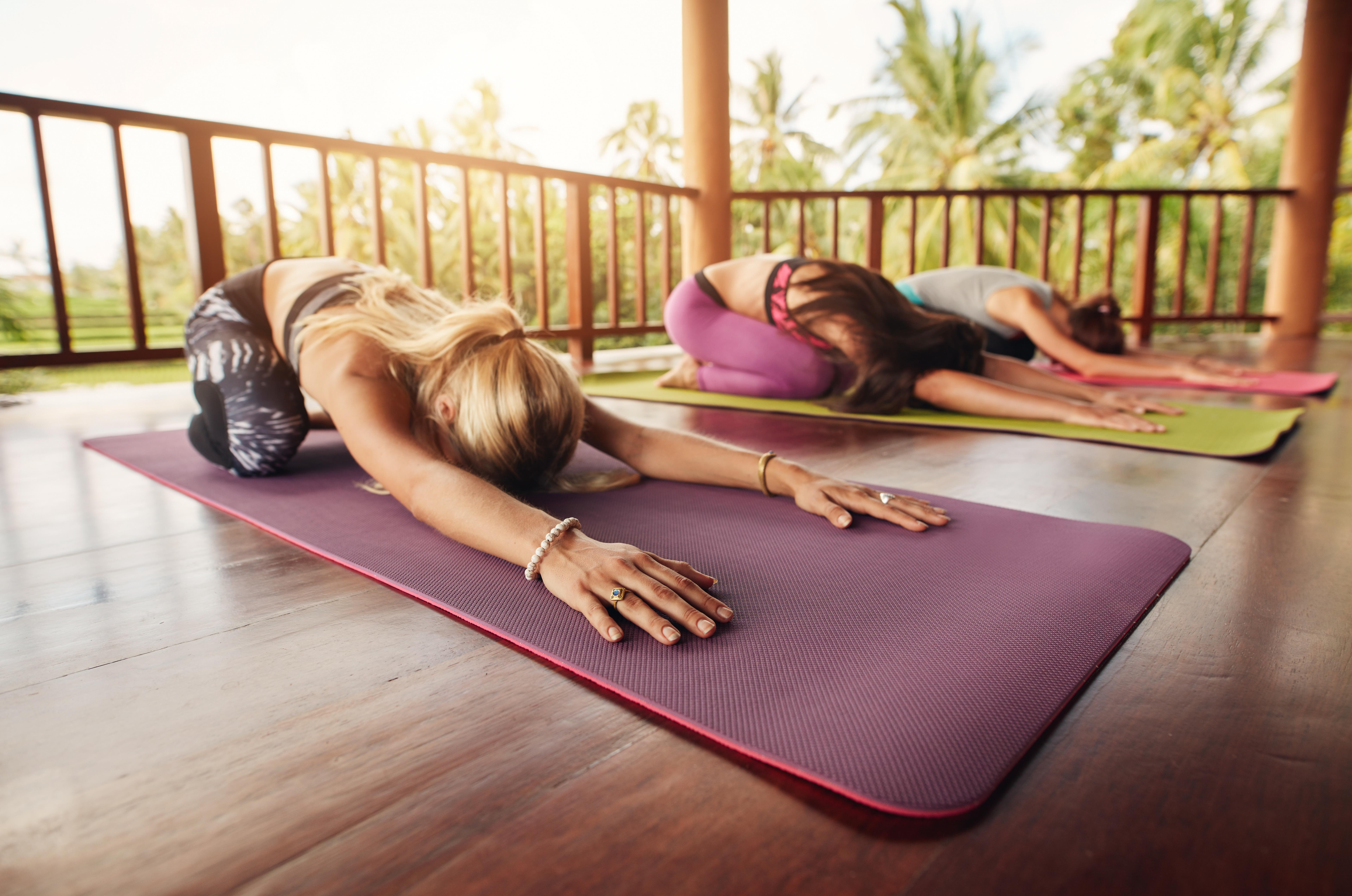
Child’s Pose is a yoga-inspired exercise that provides gentle stretching for the lower back, hips, and thighs while promoting relaxation. To perform this stretch, kneel on the floor and sit back on your heels, keeping your knees slightly apart. Lower your torso forward, extending your arms out in front of you on the floor. Rest your forehead on the mat and allow your body to relax into the position. Hold this pose for 20-30 seconds, breathing deeply and focusing on releasing tension in the back and hips. Child’s Pose helps to elongate the spine, reduce stiffness, and provide relief from sciatic nerve pain.
9. Reclining Figure Four Stretch: Deep Hip Stretch

The Reclining Figure Four Stretch targets the deep hip muscles, including the piriformis, which can often contribute to sciatica. Lie on your back with your knees bent and feet flat on the floor. Cross one ankle over the opposite thigh, forming a figure-four shape. Gently pull the uncrossed leg towards your chest, threading your hands through to hold behind the knee. Feel the stretch in the hip and buttock of the crossed leg. Hold for 20-30 seconds before switching sides. This exercise alleviates tightness in the hips and can reduce compression on the sciatic nerve.
10. Spinal Twist: Easing Lower Back Tension
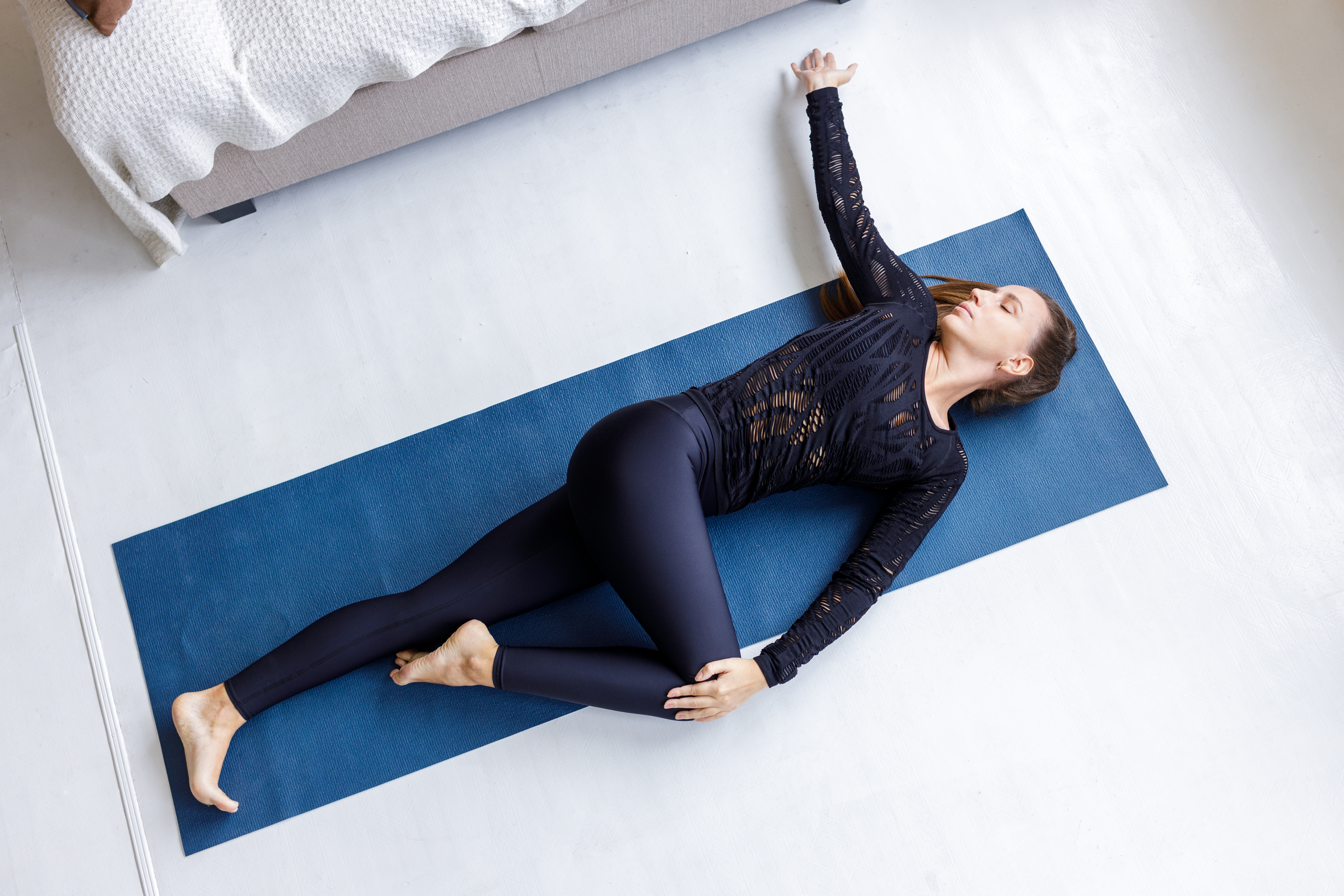
The Spinal Twist is a gentle exercise that promotes flexibility in the lower back and helps to relieve sciatica discomfort. Begin by lying on your back with your legs extended. Bend one knee and cross it over your body, allowing it to rest on the opposite side. Keep your shoulders flat on the floor and extend your arms out to the sides for support. Hold this position for 20-30 seconds, feeling a stretch through your lower back and hip. Switch sides and repeat. The Spinal Twist helps to release tension in the spine and improve mobility.
11. Bridge Pose: Strengthening Glutes and Core
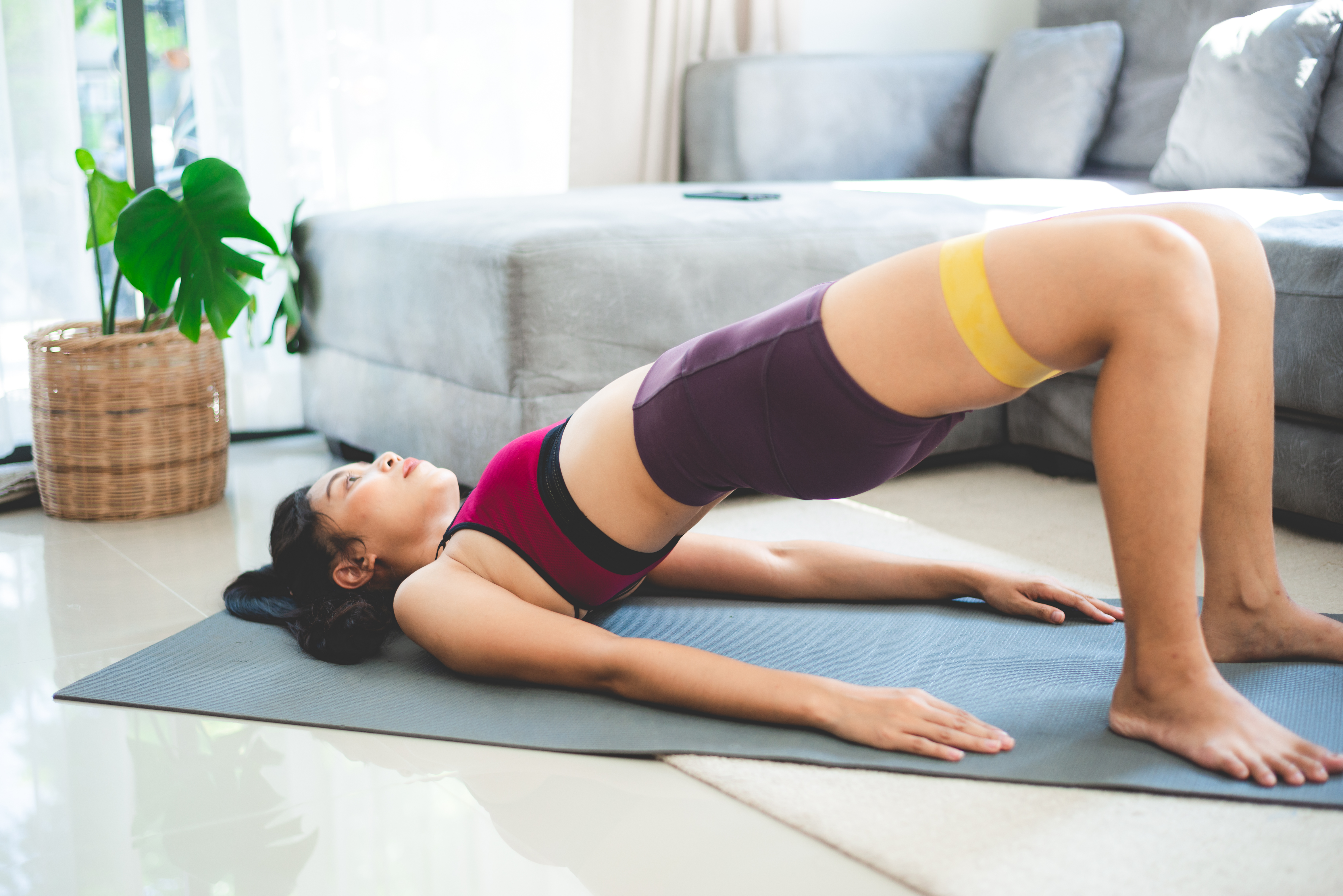
Bridge Pose is a strengthening exercise that targets the glutes and core, providing support for the lower back and relieving sciatica pain. Lie on your back with your knees bent and feet flat on the floor, hip-width apart. Press through your heels and lift your hips towards the ceiling, forming a straight line from your shoulders to your knees. Hold the position for 5-10 seconds, then lower your hips back down slowly. Repeat 10-15 times. This exercise strengthens the muscles that stabilize the spine, reducing pressure on the sciatic nerve.
12. Hip Flexor Stretch: Releasing Tension
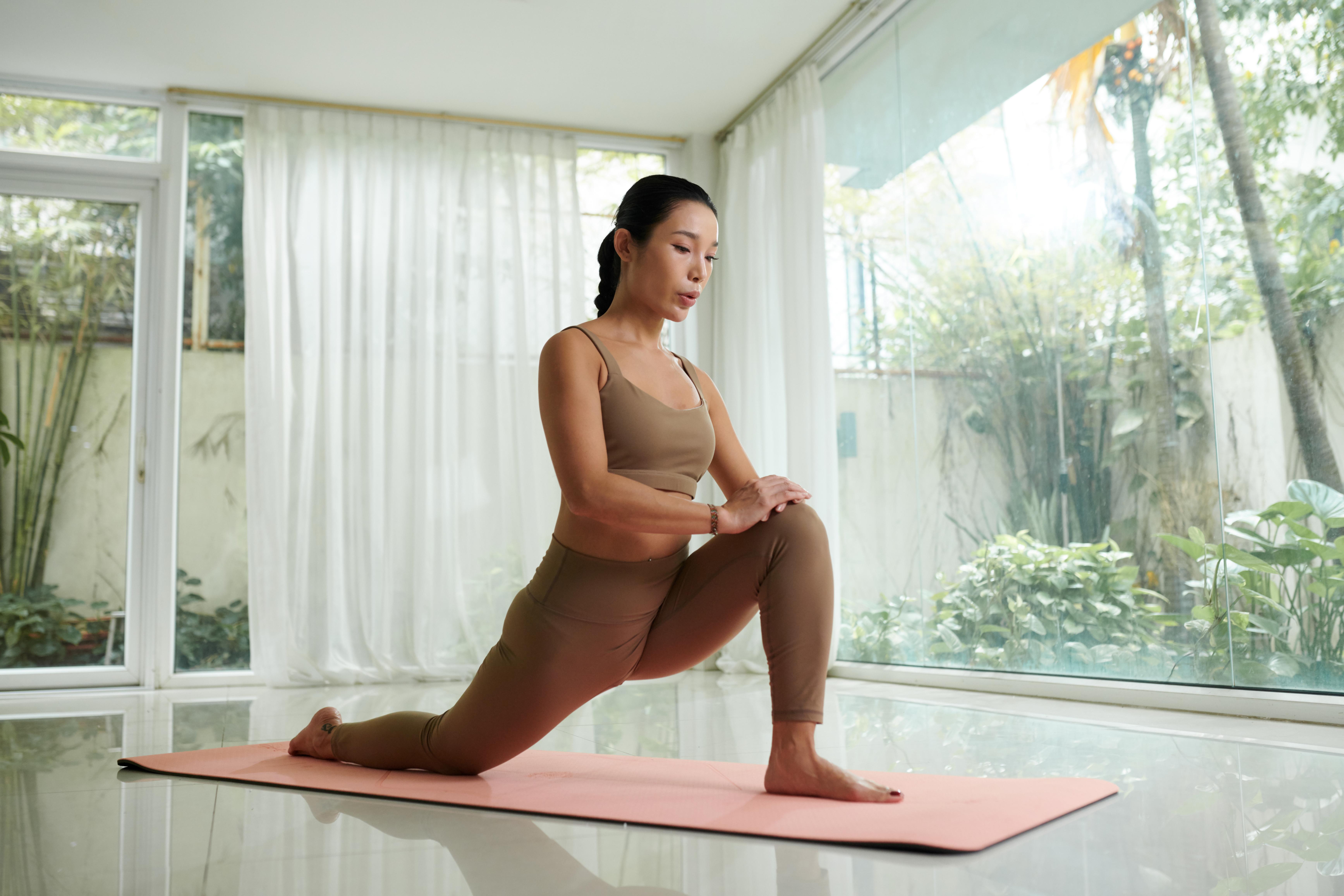
Tight hip flexors can contribute to lower back pain and aggravate sciatica. The Hip Flexor Stretch helps to alleviate tension in this area. Start in a kneeling position with one foot forward, creating a 90-degree angle with your knee. Shift your weight forward slightly until you feel a stretch in the front of your hip. Keep your torso upright and avoid over-arching your lower back. Hold the stretch for 20-30 seconds, then switch sides. This stretch improves flexibility and reduces tightness in the hips and lower back.
13. Cobra Stretch: Alleviating Nerve Pressure

The Cobra Stretch gently extends the spine, relieving pressure on the sciatic nerve and promoting spinal mobility. Lie face down on the floor with your hands placed under your shoulders. Press into your palms and lift your chest off the ground, keeping your elbows slightly bent. Avoid straining your lower back and stop if you feel any discomfort. Hold the position for 10-15 seconds, then lower back down. Repeat 5-10 times. This exercise helps to decompress the lower back and improve flexibility.
14. Side-Lying Leg Lift: Building Hip Stability
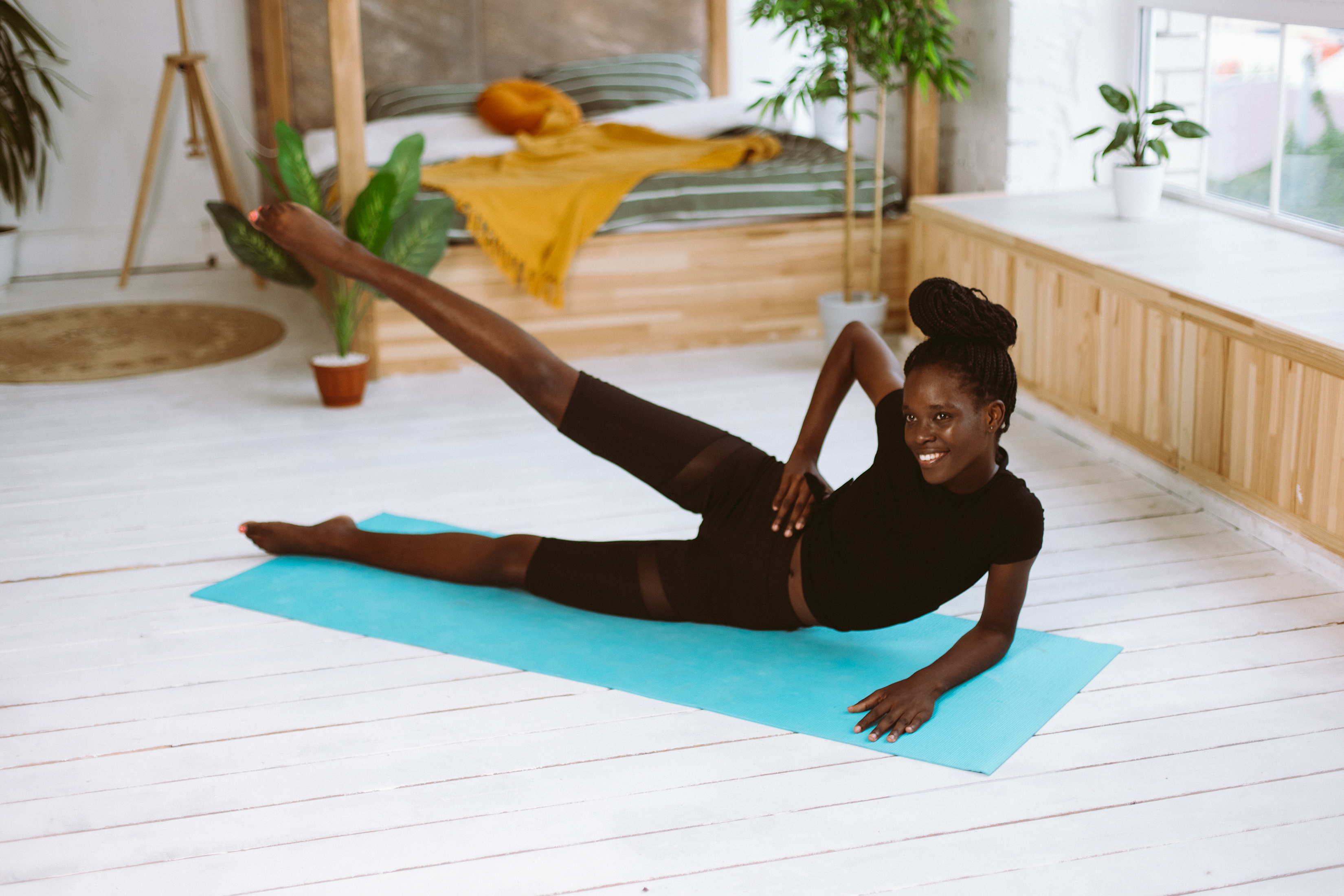
Side-Lying Leg Lifts strengthen the hip abductor muscles, which support the pelvis and lower back. Lie on your side with your legs extended straight. Rest your head on your arm or a pillow for support. Lift your top leg slowly to about 45 degrees, then lower it back down. Perform 10-15 repetitions on each side. Focus on controlled movements to prevent strain. This exercise enhances hip stability and alignment, reducing stress on the sciatic nerve and promoting better posture.
15. Wall Hamstring Stretch: Gentle Back and Leg Relief
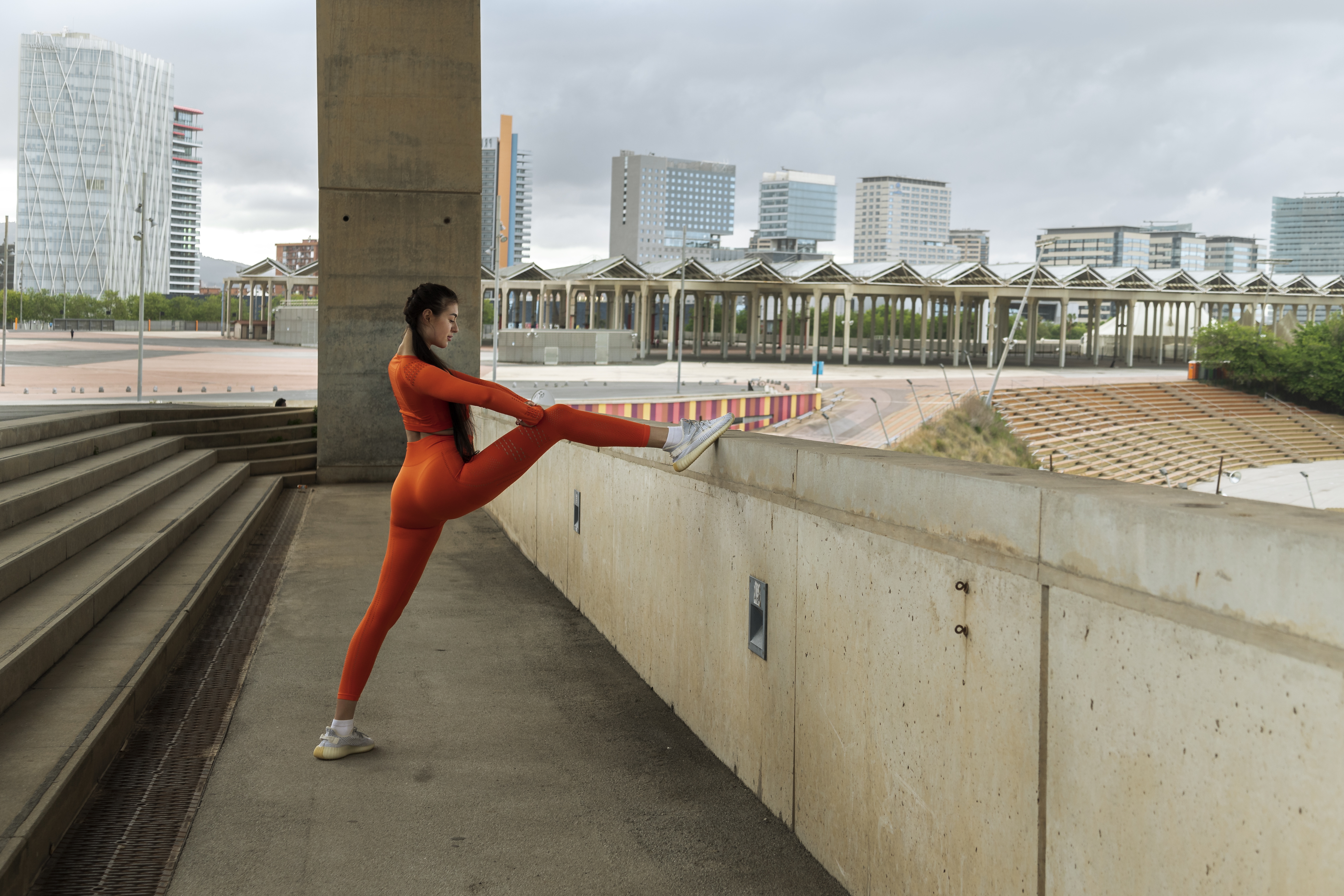
The Wall Hamstring Stretch is a simple and effective way to relieve tension in the hamstrings and lower back, both of which can contribute to sciatica pain. To perform this stretch, lie on your back near a wall or doorway. Extend one leg up along the wall, keeping it as straight as possible, while the other leg rests flat on the floor. Adjust your distance from the wall to feel a gentle stretch in the back of your elevated leg without discomfort. Hold the position for 20-30 seconds, then switch legs. This stretch improves flexibility and reduces tightness in the hamstrings, which can help alleviate pressure on the sciatic nerve.
16. Bird Dog Exercise: Strengthening Core and Stabilizing the Spine

The Bird Dog Exercise is a dynamic movement that strengthens the core, lower back, and hips, improving stability and reducing strain on the sciatic nerve. Start on your hands and knees in a tabletop position with your back straight. Slowly extend your right arm forward and your left leg backward, creating a straight line from your fingertips to your toes. Hold this position for 5-10 seconds, focusing on keeping your hips level and your core engaged. Return to the starting position and repeat on the opposite side. Perform 10-12 repetitions per side. This exercise enhances balance, core strength, and spinal stability, making it a valuable addition to a sciatica relief routine.
17. Supine Spinal Twist: Releasing Lower Back Tension
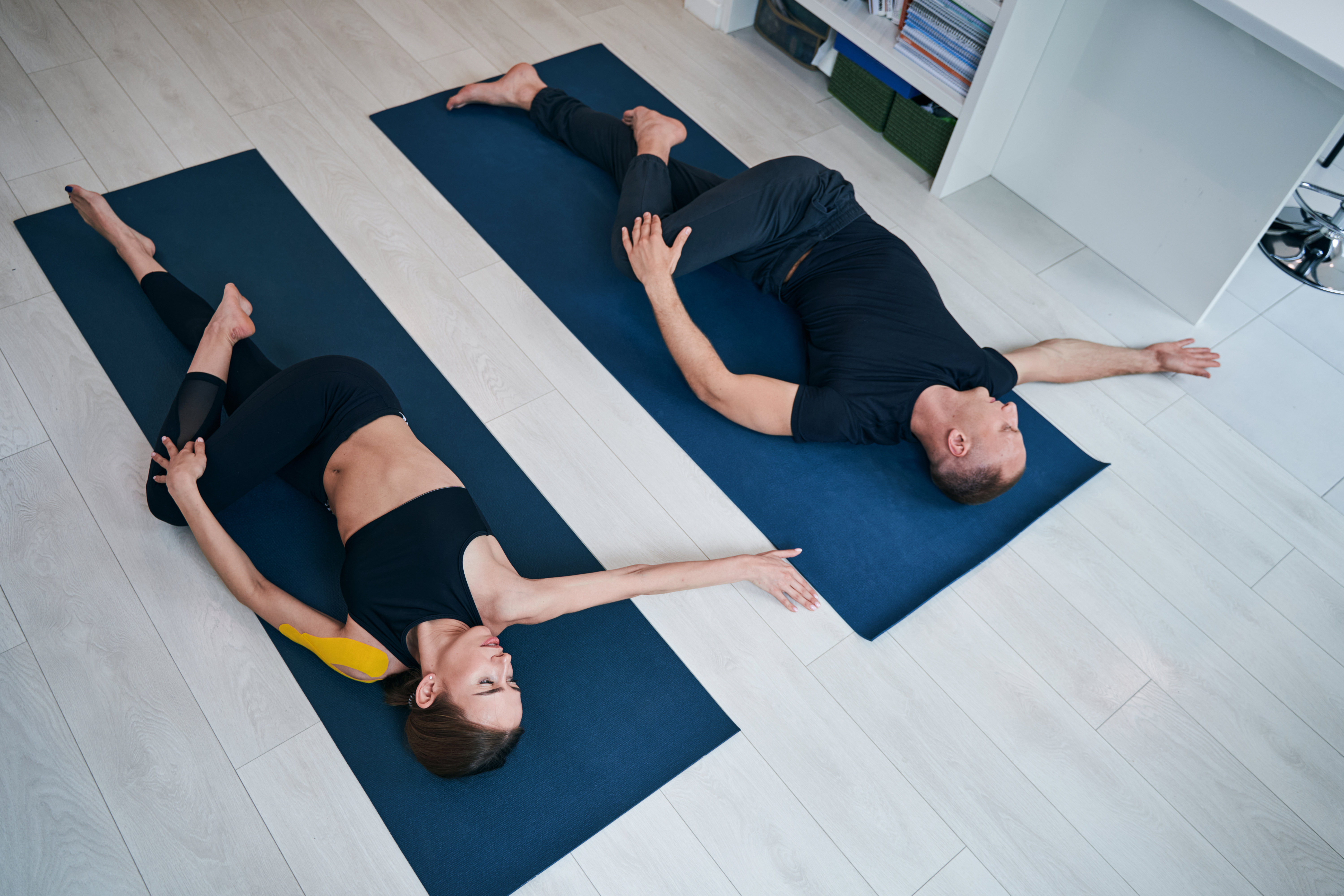
The supine spinal twist is a relaxing stretch that helps alleviate lower back tightness while gently mobilizing the spine. It also stretches the hips and glutes, which can contribute to sciatic nerve discomfort. To perform this stretch, lie flat on your back with both legs extended. Bend your right knee and slowly bring it across your body to the left, letting it rest on the floor or a cushion. Keep your right shoulder anchored to the ground as you extend your right arm out to the side and turn your head toward your right fingertips. Hold this position for 20-30 seconds, breathing deeply to encourage relaxation. Repeat on the other side. This movement relieves lower back tension and promotes spinal flexibility, helping to reduce pressure on the sciatic nerve.
18. Seated Figure Four Stretch: Hip and Glute Relief

The seated figure four stretch is a great option for targeting the piriformis muscle and opening up the hips, making it especially useful for those who experience sciatic pain due to tight hip muscles. Begin by sitting upright in a sturdy chair with both feet flat on the floor. Cross your right ankle over your left knee, creating a figure-four shape with your legs. Keep your right foot flexed to protect the knee. Slowly lean forward while keeping your back straight, stopping when you feel a deep stretch in your right hip and glute. Hold this position for 20-30 seconds, then switch sides. This stretch helps release tension in the piriformis muscle, which, when tight, can press against the sciatic nerve and cause discomfort.
19. Reclined Hamstring Stretch: Gentle Leg Flexibility
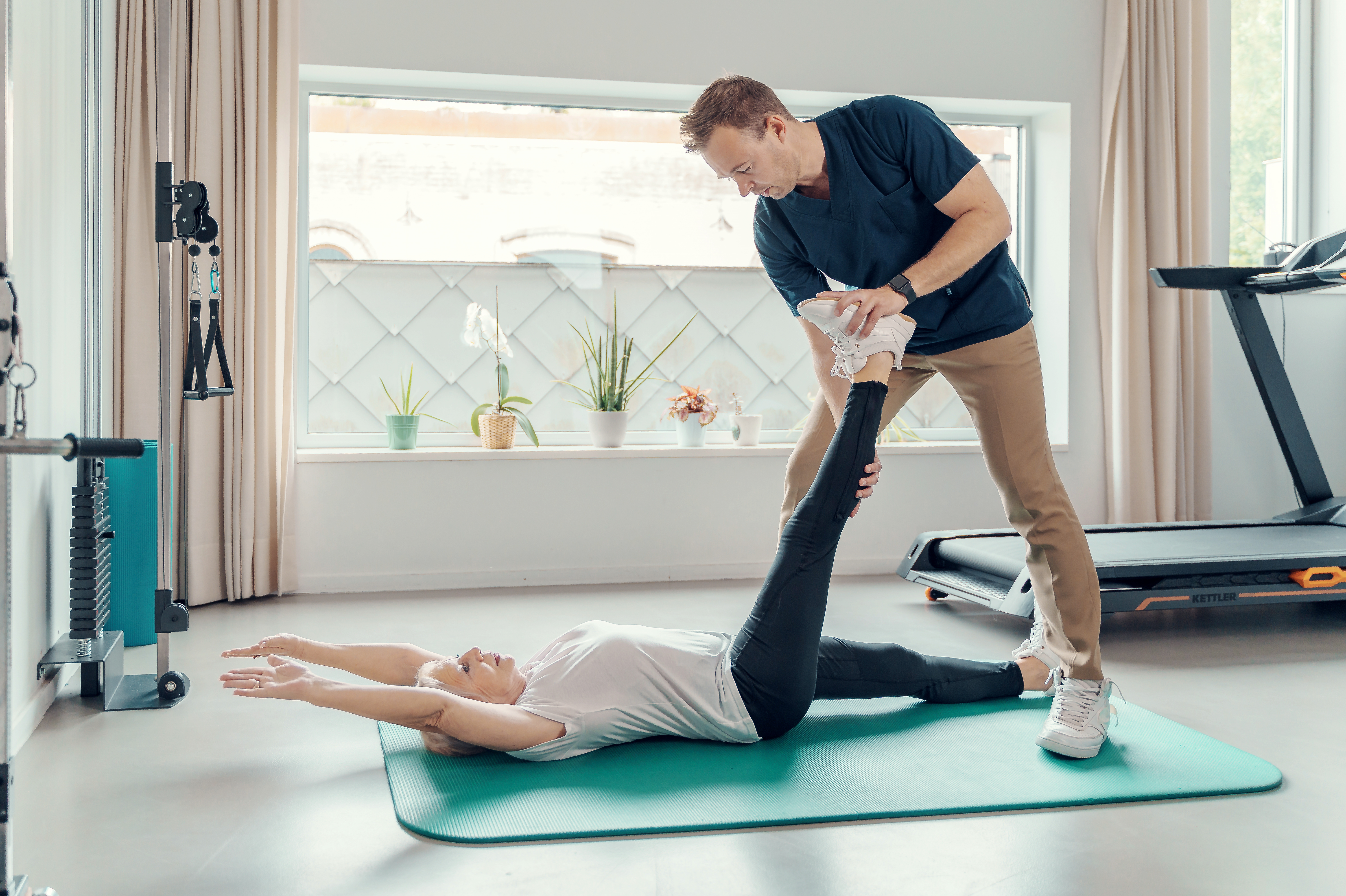
Tight hamstrings can pull on the lower back and contribute to sciatic pain. This reclined hamstring stretch lengthens the muscles in a gentle way that doesn’t put excessive strain on the spine. Lie on your back with both legs extended. Lift your right leg toward the ceiling, keeping it as straight as possible without locking your knee. Hold the back of your thigh with both hands for support, or loop a yoga strap or towel around your foot if reaching is difficult. Keep your left leg relaxed on the floor and avoid straining. Hold the stretch for 20-30 seconds, then switch legs. By improving hamstring flexibility, this stretch reduces tension on the lower back and decreases compression on the sciatic nerve.
20. Butterfly Stretch: Hip and Lower Back Mobility
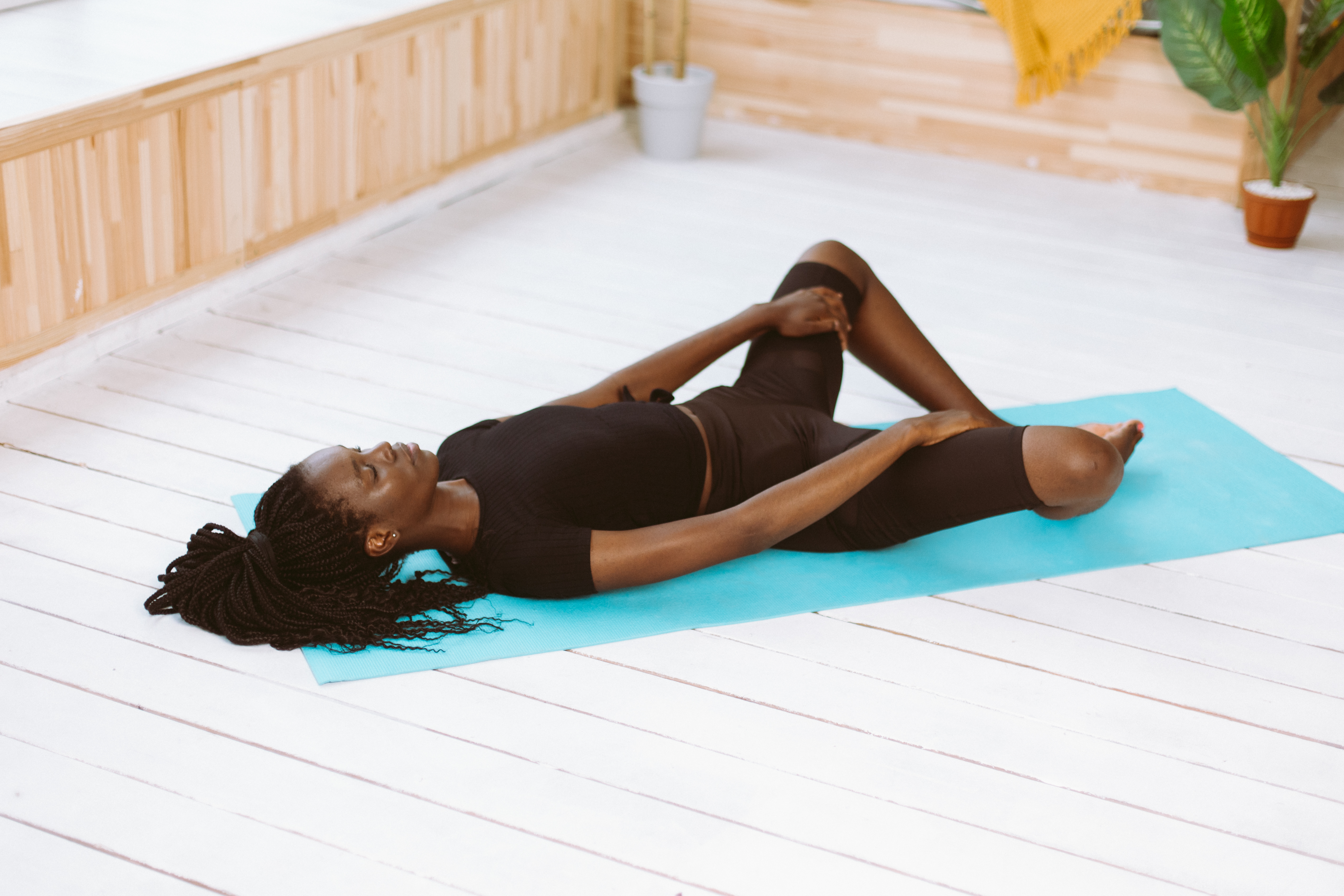
Tight hip adductors can contribute to poor posture and sciatic discomfort. The butterfly stretch gently opens up the hips and promotes relaxation in the lower back. Sit on the floor with your knees bent and the soles of your feet touching. Let your knees fall outward naturally while holding onto your feet with both hands. Sit tall and gently press your knees toward the floor, keeping your spine straight. For a deeper stretch, lean slightly forward from the hips while maintaining good posture. Hold this position for 20-30 seconds. This stretch improves hip flexibility, encourages better pelvic alignment, and reduces strain on the sciatic nerve.
21. Pelvic Clocks: Improving Core Control
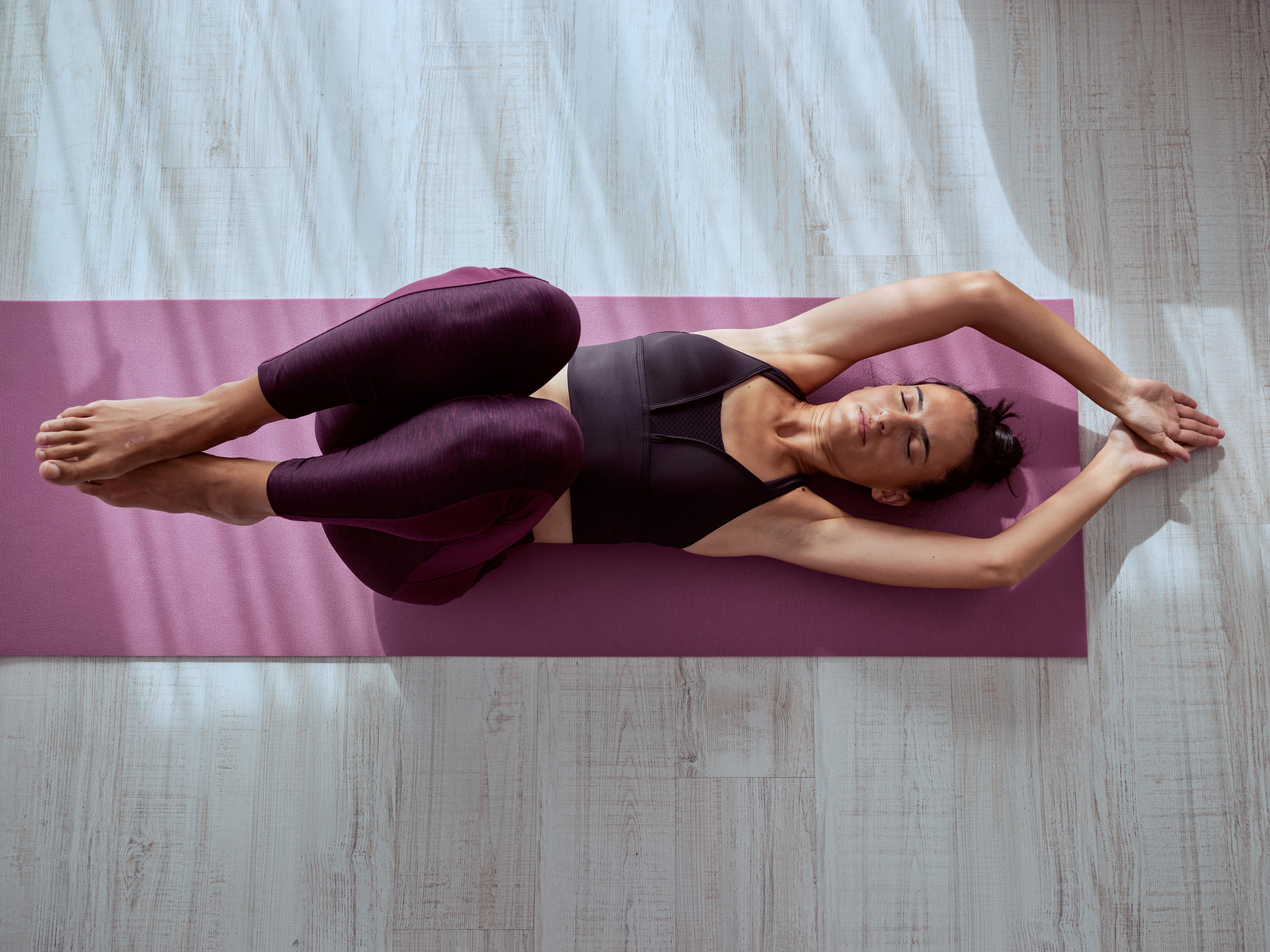
Pelvic clocks are a subtle yet effective movement that strengthens the core and improves pelvic mobility, which can alleviate lower back discomfort associated with sciatica. Lie on your back with your knees bent and feet flat on the floor. Imagine your pelvis as the face of a clock. Slowly tilt your pelvis forward toward 12 o’clock, then back toward 6 o’clock. Next, tilt side to side, moving from 3 o’clock to 9 o’clock. Move through this circular pattern 10-15 times in each direction, keeping the movements smooth and controlled. This exercise strengthens the core muscles that support spinal alignment, helping to reduce strain on the lower back and sciatic nerve.
22. Supported Bridge Pose: Gentle Spinal Support
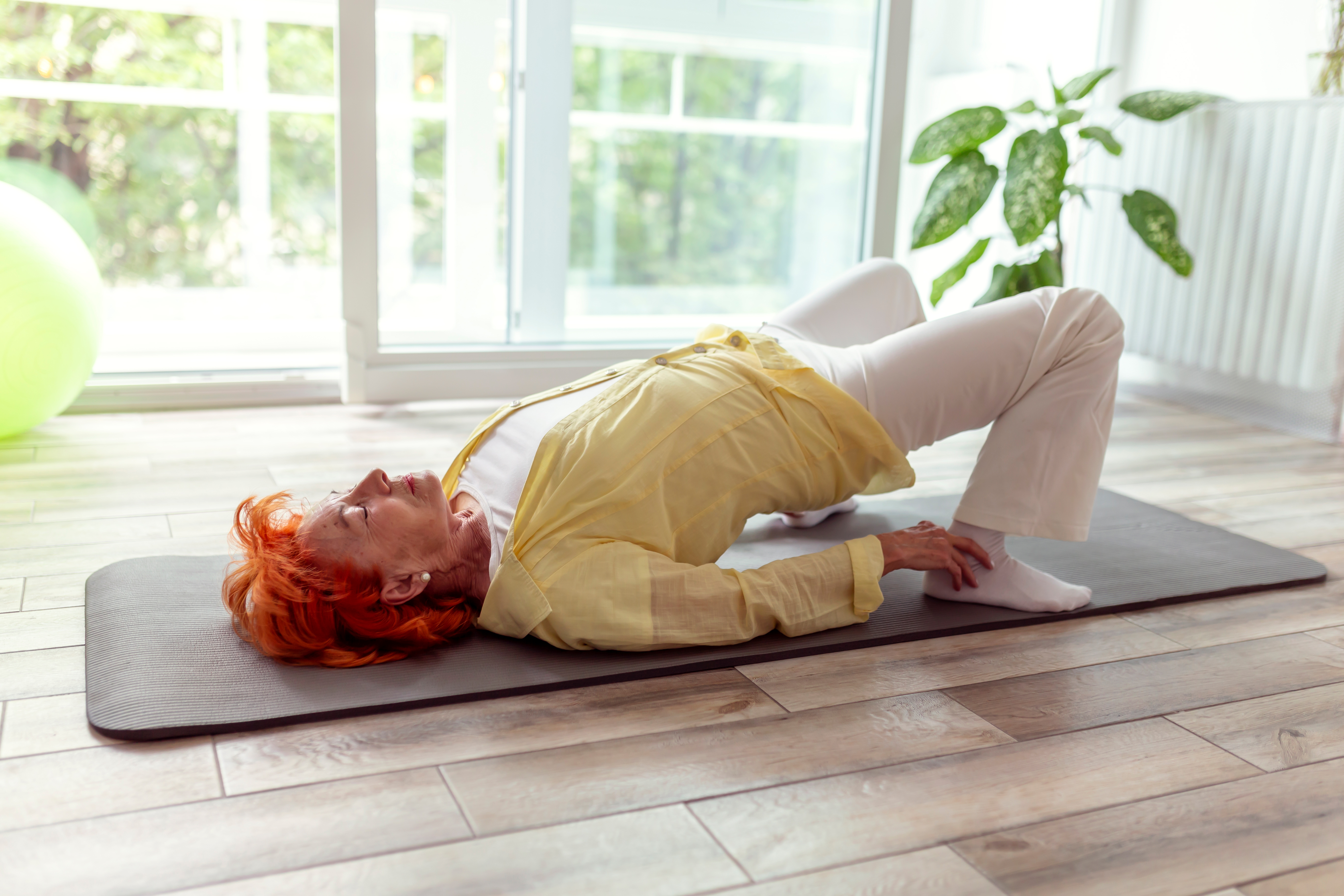
Bridge pose is excellent for strengthening the glutes and core muscles that help stabilize the lower back. Using a support makes the pose even more accessible for those dealing with sciatic pain. Lie on your back with your knees bent and feet flat on the floor, hip-width apart. Place a yoga block, firm pillow, or folded blanket under your lower back or sacrum for support. Relax into the position, letting your hips rest on the support. Hold for 30-60 seconds, breathing deeply to encourage relaxation. This supported variation gently relieves spinal compression while providing stability and support to the lower back. It also encourages better posture and core engagement, which can help prevent future sciatic pain.
23. Chair-Assisted Hip Flexor Stretch: Reducing Hip Tension
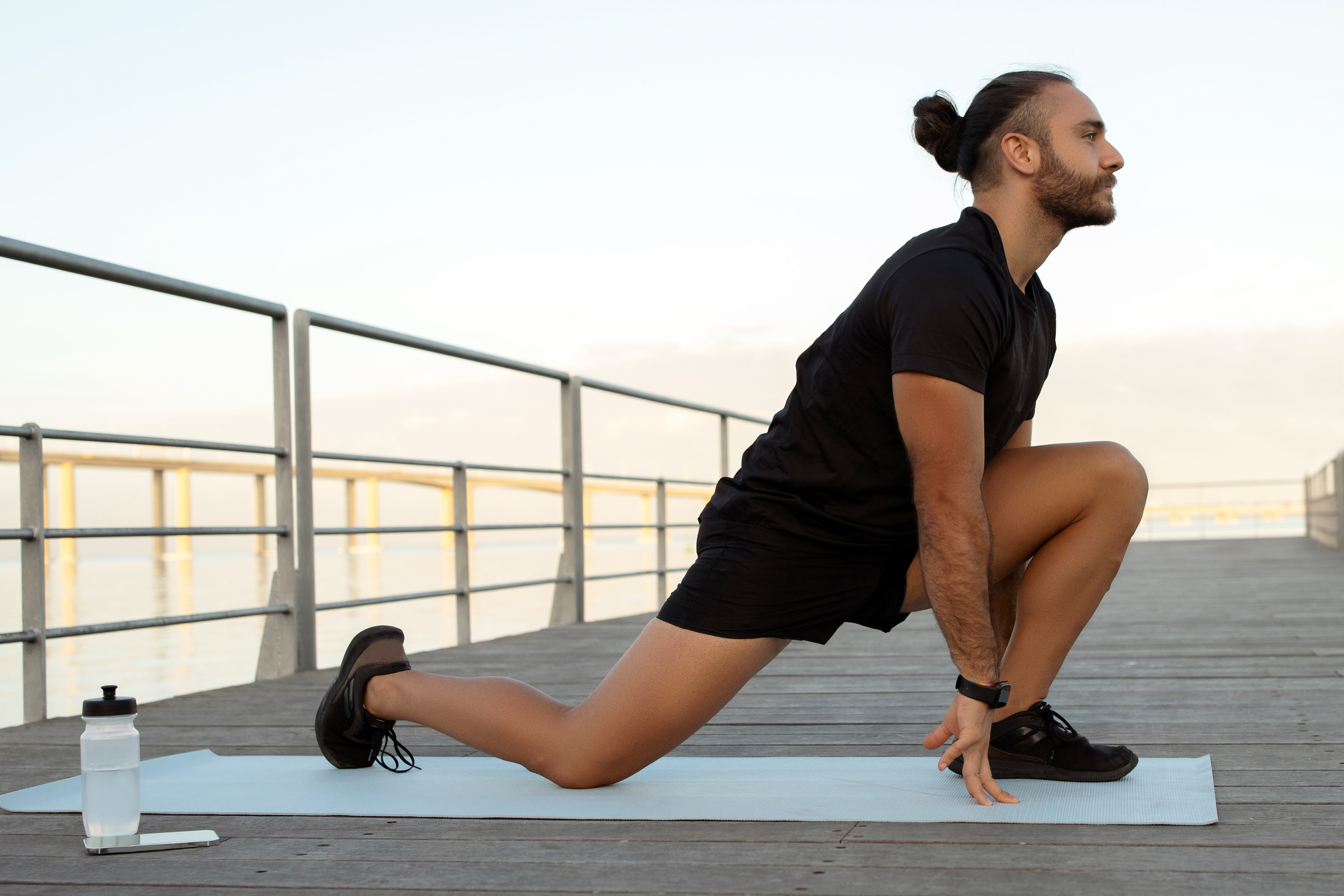
Tight hip flexors can pull on the lower back, exacerbating sciatic pain. This seated variation allows for a controlled and accessible stretch, making it ideal for those who have difficulty with standing stretches. To perform this stretch, sit on the edge of a sturdy chair with both feet flat on the floor. Extend your right leg backward, keeping the top of your foot resting on the ground behind you. Sit tall, keeping your spine straight, and gently lean forward until you feel a stretch at the front of your right hip. Make sure to keep your chest lifted and avoid rounding your lower back. Hold this position for 20-30 seconds, breathing deeply to allow your muscles to relax. Switch sides and repeat. By opening up tight hip flexors, this stretch helps alleviate lower back strain and reduces tension along the sciatic nerve, promoting better mobility and comfort.
24. Calf Stretch Against the Wall: Supporting Sciatic Nerve Mobility

Tight calf muscles can contribute to sciatic nerve irritation, particularly when tension in the lower leg causes discomfort to radiate upward. This simple yet effective stretch helps maintain flexibility in the calves and supports the overall mobility of the sciatic nerve. Stand facing a wall with your hands pressed against it at shoulder height. Step your right foot back, keeping your toes pointing forward and your heel planted firmly on the ground. Keep your back leg straight and press your heel toward the floor while maintaining an upright posture. You should feel a gentle stretch along the back of your calf. Hold this position for 20-30 seconds, breathing deeply to encourage muscle relaxation. Switch legs and repeat. By improving lower leg flexibility, this stretch reduces muscle tightness that may aggravate sciatic nerve discomfort, helping to support fluid movement and reduce pain.
25. Knee Rolling Stretch: Loosening the Lower Back
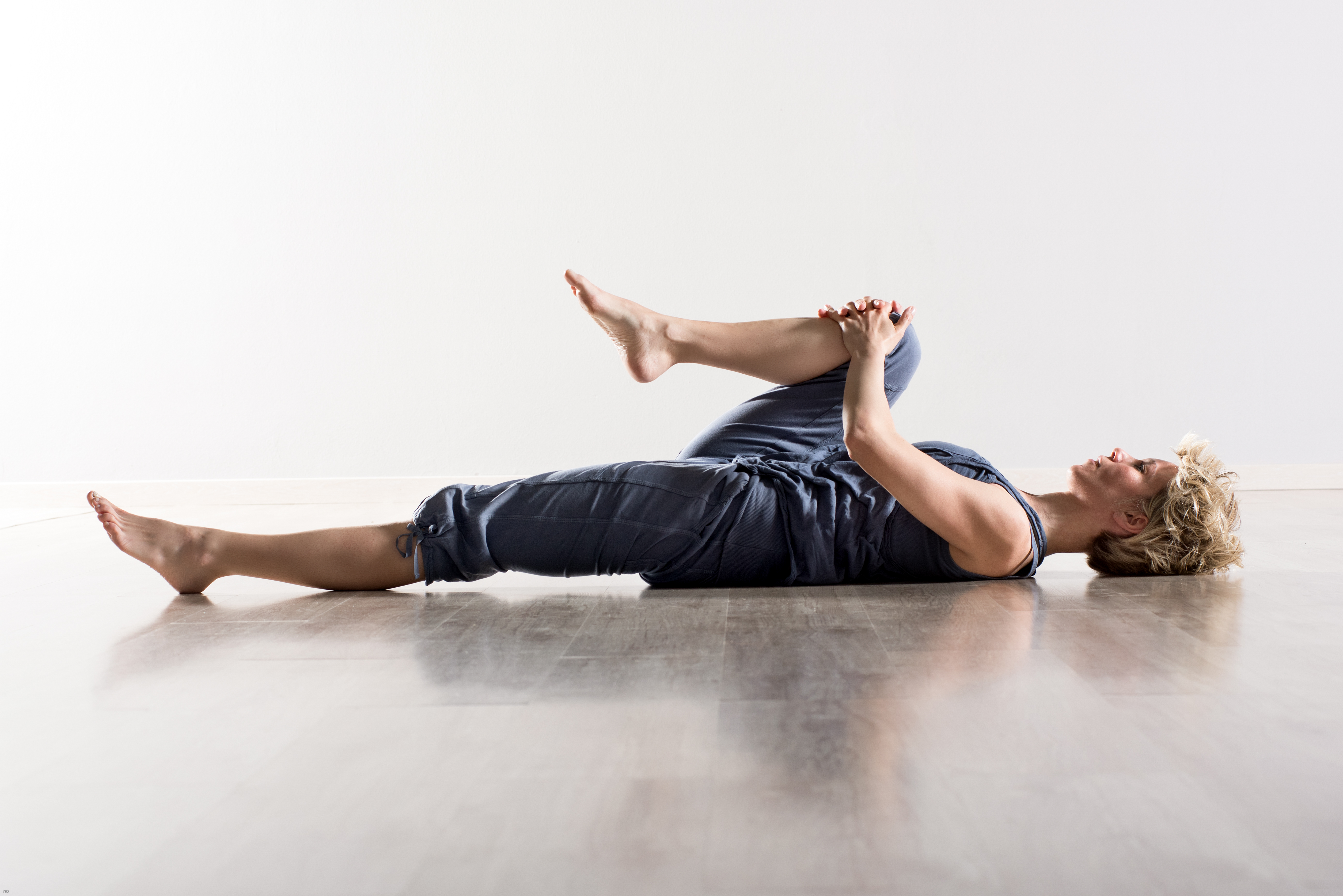
A gentle twisting movement can provide relief for lower back stiffness, which often contributes to sciatic pain. The knee rolling stretch encourages spinal mobility and relaxation without putting excessive strain on the back. Lie on your back with your knees bent and feet flat on the floor. Keep your arms outstretched to the sides for support. Slowly let both knees drop to the right while keeping your shoulders anchored to the floor. Hold this position for 10-15 seconds, feeling a stretch through your lower back and hips. Bring your knees back to the center, then slowly drop them to the left and hold again for 10-15 seconds. This movement gently mobilizes the lower back and helps release built-up tension, reducing stiffness and promoting spinal health while relieving pressure on the sciatic nerve.
26. Walking in Water: Low-Impact Sciatica Relief

For those looking for a low-impact way to relieve sciatica pain while strengthening the lower body, walking in water provides an excellent alternative to land-based exercises. The buoyancy of water reduces pressure on the spine while allowing for gentle movement. Find a pool where you can stand in waist-deep water. Begin walking forward at a comfortable pace for 5-10 minutes, focusing on engaging your core and maintaining good posture. Then, reverse direction and walk backward for another 5-10 minutes to activate different muscle groups. If needed, use the pool's edge for balance support. Water walking helps strengthen the legs, core, and lower back while reducing strain on the sciatic nerve. The resistance provided by water encourages muscle engagement without excessive impact, making it a soothing and effective way to improve mobility and reduce discomfort.
Empowering Movement for Sciatica Recovery

Your routine now offers a broader range of stretches and strengthening movements to target sciatica pain effectively. Consistent practice of these exercises can help improve flexibility, reduce nerve pressure, and support overall spinal health. Always remember to listen to your body and modify exercises as needed to ensure a safe and comfortable experience. These 26 exercises provide a comprehensive approach to managing sciatica pain. By incorporating them into your routine and practicing regularly, you can alleviate discomfort, improve mobility, and strengthen the muscles that support the spine and hips. Always consult a healthcare professional before beginning a new exercise program, and listen to your body to avoid overexertion. With consistent effort and patience, these exercises can significantly enhance your quality of life.